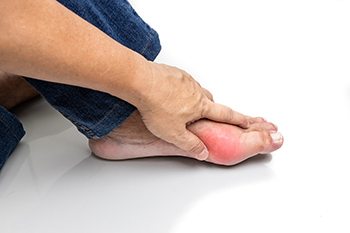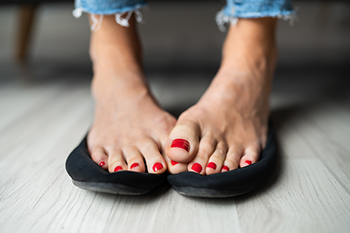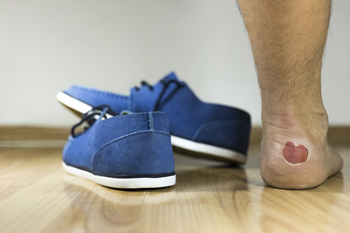
Plantar fasciitis is thought to be the most common cause of heel pain. Symptoms of plantar fasciitis include pain under the heel that also radiates into the arch and tenderness on the sole of the foot when it is touched. Another symptom is pain that is worse in the morning, wears off as the day progresses, but returns later. The plantar fascia is a band of tissue that runs under the foot from the toes to the heels. Overuse from repetitive activity aggravates the plantar fascia and causes inflammation. It is common to athletes, dancers, runners, but also may be the result of poor foot biomechanics. Overpronation of the feet, when the foot rolls inward, increases pressure on the plantar fascia. High arches also contribute to this condition, because the foot is not able to properly cushion the force caused by an activity. Other causes of plantar fasciitis include shoes that offer little support or cushioning, carrying too much body weight, and tight calf and other leg muscles. If you have heel pain that matches the symptoms of plantar fasciitis, it is a good idea to see a podiatrist for a checkup and treatment options.
Plantar fasciitis is a common foot condition that is often caused by a strain injury. If you are experiencing heel pain or symptoms of plantar fasciitis, contact one of our podiatrists from Westside Podiatry Center, LLP. Our doctors can provide the care you need to keep you pain-free and on your feet.
What Is Plantar Fasciitis?
Plantar fasciitis is one of the most common causes of heel pain. The plantar fascia is a ligament that connects your heel to the front of your foot. When this ligament becomes inflamed, plantar fasciitis is the result. If you have plantar fasciitis you will have a stabbing pain that usually occurs with your first steps in the morning. As the day progresses and you walk around more, this pain will start to disappear, but it will return after long periods of standing or sitting.
What Causes Plantar Fasciitis?
- Excessive running
- Having high arches in your feet
- Other foot issues such as flat feet
- Pregnancy (due to the sudden weight gain)
- Being on your feet very often
There are some risk factors that may make you more likely to develop plantar fasciitis compared to others. The condition most commonly affects adults between the ages of 40 and 60. It also tends to affect people who are obese because the extra pounds result in extra stress being placed on the plantar fascia.
Prevention
- Take good care of your feet – Wear shoes that have good arch support and heel cushioning.
- Maintain a healthy weight
- If you are a runner, alternate running with other sports that won’t cause heel pain
There are a variety of treatment options available for plantar fasciitis along with the pain that accompanies it. Additionally, physical therapy is a very important component in the treatment process. It is important that you meet with your podiatrist to determine which treatment option is best for you.
If you have any questions, please feel free to contact one of our offices located in Liverpool, Camillus, Skaneateles, Oswego, and Cicero, NY . We offer the newest diagnostic and treatment technologies for all your foot care needs.





